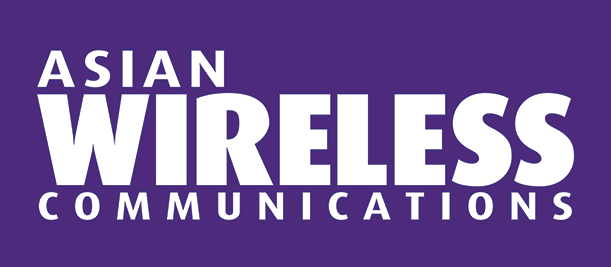11 April 2025

Shashank Singh, Head of Sales, Asia, Cerillion
For CSPs in Asia, traditional broadband and mobile services are no longer the only sources of revenue, and the typical barriers between prepaid and postpaid services are blurring as telcos diversify through digital services and content delivery.
The need for a sophisticated, best-of-breed convergent charging system (CCS) to provide a single point of charging is critical, offering a new approach to monetisation which supports the creation of new areas of growth.
Charging has evolved from a simple mechanism for prepaid voice and SMS services to become a comprehensive convergent solution, handling all service types, payment methods and customer segments, including 5G Standalone services like eMBB, URLLC and mIoT. The primary driver behind this evolution is the changing nature of telecoms services themselves; as traditional voice and SMS use declines, along with the revenues they used to generate, data services and digital content have become the primary revenue generators.
Telcos are now realising the importance of providing a complete solution rather than just enabling connectivity. For example, connecting two AWS data centres is just providing connectivity; however, providing a full AWS solution with data centres, infrastructure, co-location spaces, training, professional services and support, in addition to connectivity is what the telco industry should aspire to.
This shift has created a need for charging systems that can handle multiple service types simultaneously while maintaining real-time accuracy and visibility for both CSPs and subscribers. This is especially important for premium services, such as immersive gaming, remote surgery, etc. It also underlines the importance of a strong product catalogue that must provide the capability to configure products, solutions and bundles rapidly.
In addition, increased competition in all markets is creating demand for a more personalised service, with new customer spending controls and pricing transparency required to create a more compelling customer experience and increase customer lifetime value.
In Asia, where digital adoption rates are among the highest globally, CSPs must manage complex charging scenarios that incorporate not only traditional fixed-line services, mobile data and fibre broadband, but also emerging digital services. Key factors shaping the market include:
- Diverse customer segments with varying service needs
- Growing demand for bundled services including mobile, broadband and content
- Strong competition from both traditional operators and digital-first service providers
- Widespread adoption of digital payment methods
With convergent charging across services, CSPs can simplify the customer experience and reduce the amount of friction in service adoption. Flexible charging capabilities enable operators to launch new services quickly and implement innovative pricing strategies, while reducing operational costs and minimising revenue leakage.
As 5G Standalone networks continue their roll out – though coverage nevertheless remains uneven, with vast disparities in access between countries and within – business support systems must adapt to handle new service types and pricing models, including network slicing and quality-of-service-based charging.
In contrast to more developed markets, high-opportunity frontier markets experiencing rapid digital transformation have high rates of smartphone penetration and higher rates of data consumption, requiring flexible charging solutions that can accommodate both traditional telecoms and modern digital services.
The future of convergent charging
Looking ahead, there are several trends currently shaping convergent charging:
Charging for network slicing for enterprises with specific, customised QoS requirements for separate slices on a single physical network.
Charging for compute and storage usage at the edge, for B2B – for example, a bank purchases cloud connectivity for a multi-country operation through their CSP, which charges them in turn on the basis of a pre-agreed tariff; the cloud provider will send the usage data, and the CCS will apply charges based on the tariffs.
Charging for IoT platform services including device management, data integration and analytics. This is particularly applicable for smart city services, where IoT plays a crucial role in enabling and future-proofing the cities of tomorrow, providing the scalability to support millions of connected devices and sensors.
Charging for e-commerce and digital marketplace transactions and fees. For example, reselling other SaaS based platforms where the customer is charged based on API consumption. Or the marketplace platform charging listing fees to a customer based on the quantity and time the product stays on the marketplace.
Charging for media and entertainment content, where rather than a flat monthly access fee, some platforms may want to charge customers based on usage (i.e. per film watched or song streamed) or on the length of the media.
Technical requirements
Modern convergent charging systems must address several technical requirements to meet market demands. Real-time charging capabilities are essential, as they enable CSPs to implement sophisticated pricing strategies and prevent revenue leakage. CCS platforms must also support multiple charging models, including:
- 5G SA use cases for services including network slicing, eMBB, URLLC and mIoT
- Usage-based charging, especially including third-party charging, API-based charging, and similar models (anything that can be counted)
- Subscription-based services
- Pay-per-use content
- Dynamic pricing, based on network conditions or time of day
Integration challenges remain a significant concern, particularly when dealing with legacy systems and multiple service platforms. CSPs must ensure their charging systems can interact seamlessly with various network elements and customer relationship management systems, as well as third-party service providers.
The evolution of convergent charging is reflective of the industry’s broader transformation from delivering just traditional communications services to comprehensive digital services portfolios. Success in this environment requires charging systems that can handle the complexity of modern telecommunications services while remaining flexible enough to accommodate future innovations.
To go beyond just differentiating between prepaid and postpaid, telcos need a charging system that can monetise network assets and create value in new content services, while maintaining the efficiency and reliability that customers expect. Those who can successfully implement and leverage advanced convergent charging capabilities will be best positioned to capture opportunities in the market.






